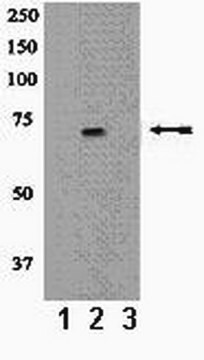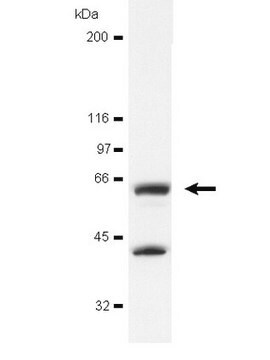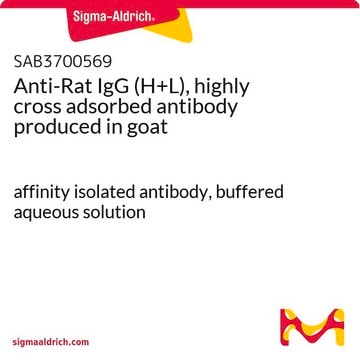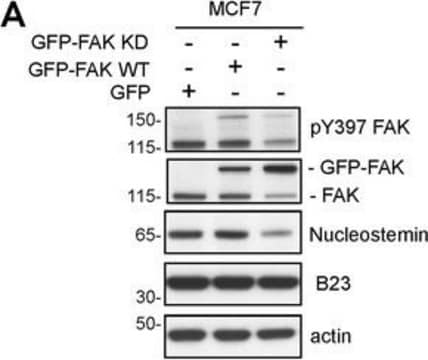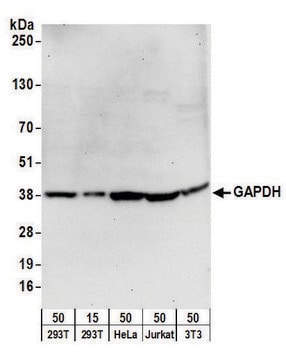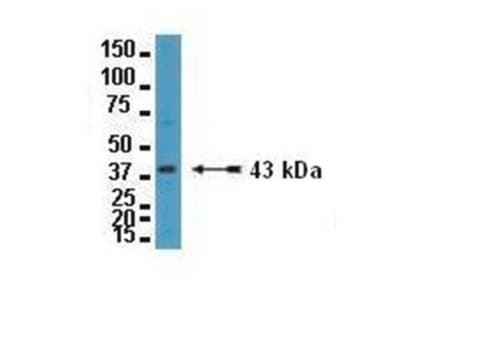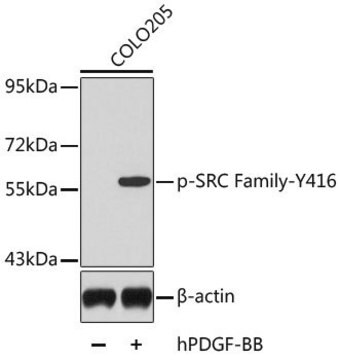05-677
Anti-phospho-Src (Tyr416) Antibody, clone 9A6
clone 9A6, Upstate®, from mouse
Synonim(y):
proto-oncogene tyrosine-protein kinase SRC, protooncogene SRC, Rous sarcoma, tyrosine kinase pp60c-src, tyrosine-protein kinase SRC-1, v-src avian sarcoma (Schmidt-Ruppin A-2) viral oncogene homolog, v-src sarcoma (Schmidt-Ruppin A-2) viral oncogene homo
About This Item
Polecane produkty
pochodzenie biologiczne
mouse
Poziom jakości
forma przeciwciała
purified immunoglobulin
rodzaj przeciwciała
primary antibodies
klon
9A6, monoclonal
reaktywność gatunkowa
mouse, human
producent / nazwa handlowa
Upstate®
metody
immunoprecipitation (IP): suitable
western blot: suitable
izotyp
IgG3
numer dostępu NCBI
numer dostępu UniProt
Warunki transportu
wet ice
docelowa modyfikacja potranslacyjna
phosphorylation (pTyr416)
informacje o genach
human ... SRC(6714)
Opis ogólny
Specyficzność
Immunogen
Zastosowanie
Signaling
Cytoskeletal Signaling
Jakość
Src Autophosphorylation/Western Blotting Analysis: 0.5-2 μg/mL of this antibody strongly detected recombinant Src (Catalog # 14-326) after incubation with Mg/Mn/ATP. Phospho-specificity was confirmed by dephosphorylation of the Src protein with λ-phosphatase.
Opis wartości docelowych
Postać fizyczna
Przechowywanie i stabilność
Komentarz do analizy
Chick embryo fibroblast (CEF) cells expressing human wild-type Src protein
Inne uwagi
Informacje prawne
Oświadczenie o zrzeczeniu się odpowiedzialności
Not finding the right product?
Try our Narzędzie selektora produktów.
Kod klasy składowania
11 - Combustible Solids
Klasa zagrożenia wodnego (WGK)
WGK 3
Certyfikaty analizy (CoA)
Poszukaj Certyfikaty analizy (CoA), wpisując numer partii/serii produktów. Numery serii i partii można znaleźć na etykiecie produktu po słowach „seria” lub „partia”.
Masz już ten produkt?
Dokumenty związane z niedawno zakupionymi produktami zostały zamieszczone w Bibliotece dokumentów.
Nasz zespół naukowców ma doświadczenie we wszystkich obszarach badań, w tym w naukach przyrodniczych, materiałoznawstwie, syntezie chemicznej, chromatografii, analityce i wielu innych dziedzinach.
Skontaktuj się z zespołem ds. pomocy technicznej
